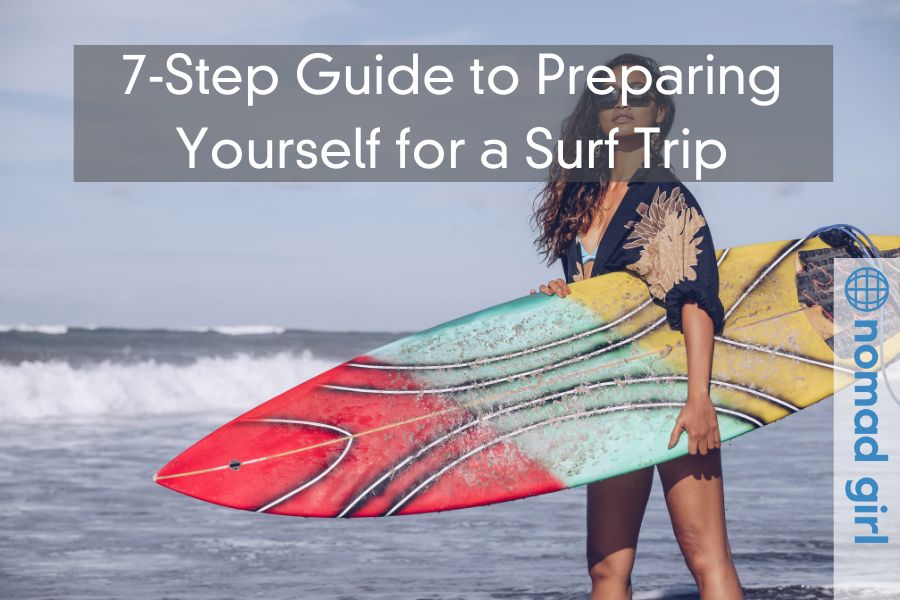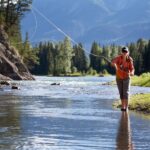Surfing is one of those rare activities that blends the power of nature, the rhythm of the ocean, and the strength of your body into one exhilarating dance with the waves.
Whether you’re a seasoned surfer or someone ready to stand on a board for the first time, embarking on a surf trip can feel like setting off on an odyssey. Every wave is a new challenge, every beach a new experience, and each surf trip is a story in the making.
As you prepare to ride the tides, consider this seven-step guide as your compass. It will steer you through the preparations you need, ensuring that once you’re standing on that board, it’s you and the ocean, with nothing else to worry about.
1. Pick a Location That Sets Your Soul on Fire
Choosing a destination for your surf trip is like selecting the soundtrack to your life; it sets the tone. The world is filled with glorious surf spots, each offering its unique flavour of adventure. Think of iconic places like Oahu, Hawaii, with its legendary North Shore waves, or the wild currents of Jeffreys Bay in South Africa.
You could even find yourself enchanted by the unexpected treasures of places like La Union, the surf capital of the Philippines (https://nomadgirl.co/la-union-surf-capital-of-the-philippines/).
When you’re picking a location, it’s not just about chasing the biggest waves. It’s about finding a place that aligns with your soul. Perhaps you prefer the rugged charm of an off-the-beaten-path surf town or the tropical paradise of a secluded island where time slows down.
If you find yourself drawn to cooler waters and dramatic coastlines, you might thrive in a surf town that also offers access to a great surf school in Newquay where both beginners and seasoned surfers hone their skills. Located on Cornwall’s rugged coast, Newquay combines world-class waves with a vibrant surf culture and stunning Atlantic scenery.
No matter what location calls to you, make sure to check the time of year for optimal surf conditions. After all, there’s nothing worse than arriving to discover the ocean’s in a flat mood, offering nothing but ripples.
2. Book Surf Lessons – Even Pros Get Rusty
Everyone knows even the best athletes need coaching, and surfing is no exception. Whether you’re a seasoned pro or it’s your first time on a board, booking a few surf lessons at the start of your trip will make all the difference.
The water, much like life, is unpredictable, and honing your skills with a surf instructor will help you navigate both with grace.
For those new to surfing, your first lesson will likely be on the beach, where you’ll practice popping up on your board without the water’s chaos beneath you.
That first moment of standing on the board is nothing short of euphoric, even if it’s on sand. It’s like learning to dance before stepping onto the floor, preparing you for the real thing.
And for the seasoned surfers, the ocean has a way of humbling even the most experienced. A few lessons at the beginning of your trip will shake off any cobwebs and refresh your muscle memory, so you’re ready to embrace the waves. With a confident start, the rest of your trip will flow smoother than a perfect wave.
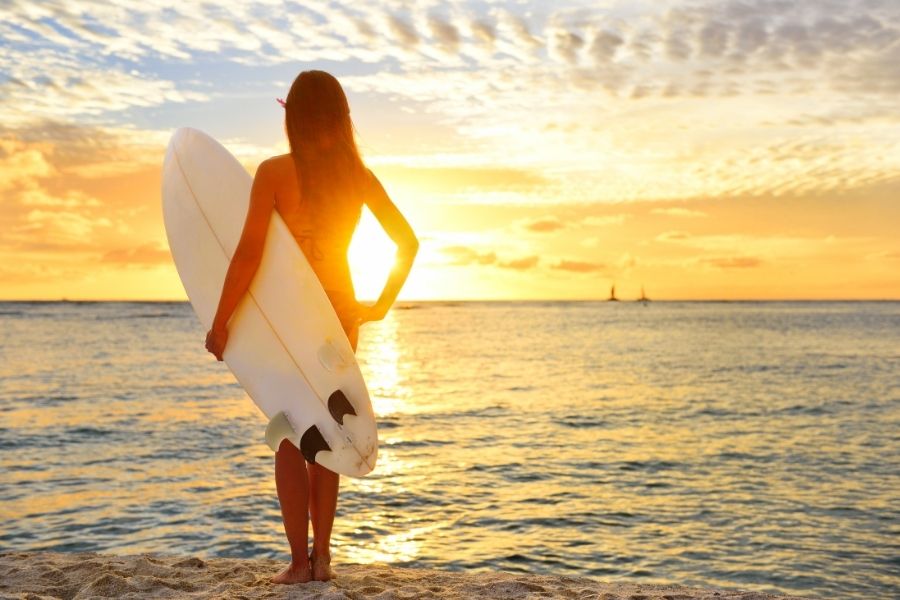
3. Gear Up – The Right Tools for the Job
You wouldn’t show up to a masquerade without a mask, and you certainly wouldn’t go surfing without the right gear. But don’t think you have to splurge on every gadget out there—surfing is about simplicity, after all.
Start with a wetsuit if you’re headed somewhere with cooler waters. Locations like California and South Africa have water that can chill you to the bone. Slipping into a wetsuit is a bit like squeezing into a superhero costume; awkward at first, but it transforms your experience once you’re out in the elements.
For sunny, tropical destinations, you can swap the wetsuit for some sunscreen that doesn’t leave the environment worse off than you found it. Reef-safe sunscreen is a must to protect those precious coral reefs.
Pack a surf poncho for quick changes on the beach—no one needs the horror of a towel drop! Also, don’t forget the sunglasses and a hat with a strap, because you don’t want to lose them to a rogue wave.
If you’re heading to rocky beaches or places with coral, reef boots are a good idea to keep your feet in one piece. And speaking of pieces, don’t be that surfer who rents a board that’s practically a plank. Renting a board or bringing your surfboard is your call, but make sure it fits your skill level.
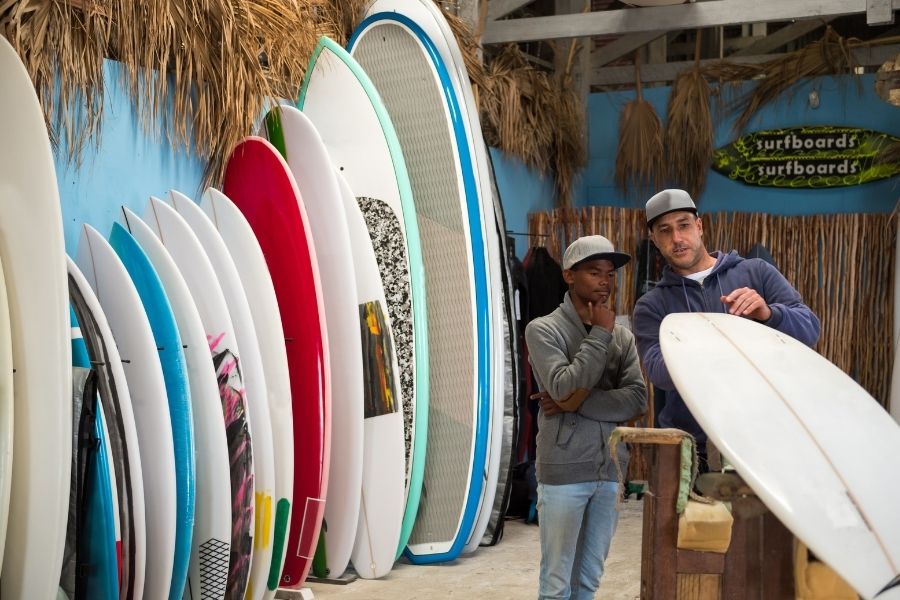
4. Know Your Surf Conditions Like You Know Your Coffee Order
Every beach has its mood. Some days it’s a gentle roll of waves, perfect for beginners. On other days, the ocean unleashes a roaring beast of a swell that only the most daring surfers should attempt. Before packing up and heading out, it’s essential to understand the surf conditions of your destination.
If you’re a beginner, don’t throw yourself into a massive swell just to say you tried it—save that for another trip. The off-season often has smaller, more manageable waves, which are ideal for anyone still getting their sea legs. Advanced surfers, on the other hand, might find off-season conditions a bit too tame and should plan for when the waves are more challenging.
Make checking the surf report part of your daily routine. Websites and apps now provide up-to-date forecasts and show destinations with good surfing all year, so you can choose the best times to hit the water. Surfing blind is no way to ride.
5. Flex Those Muscles – Pre-Trip Fitness Routine
Surfing isn’t for the faint of heart. Paddling out, pulling yourself up onto the board, and staying balanced as the wave carries you forward—it’s a full-body workout that demands stamina, strength, and flexibility.
Think of your body as the vehicle, and surfing as the terrain. You wouldn’t embark on a road trip in a car that hadn’t been serviced, so why head out on a surf trip without some preparation?
Start your pre-trip routine at least a month before you go. Focus on exercises that build core strength, like planks and balance work, as well as stamina exercises like swimming or running. Flexibility is also key—yoga or stretching will help you bend like a reed in the wind when you’re on the board.
6. Safety First: Learn Local Rules and Shark Trivia
Before you strut onto the sand, surfboard in hand, take the time to learn the local safety rules. Some beaches have zones specifically for surfers, while others share the water with swimmers and kayakers. Knowing where you can safely surf without turning a peaceful beach day into a rescue mission is essential.
And, of course, there’s the topic of sharks. Don’t let it scare you off, but it’s worth knowing if your surf destination has a significant shark population. Australia, South Africa, and California are known for their share of finned visitors.
Read up on the local marine life and make sure you understand what months are safer and what to do if you spot a shark in the water. Being informed will calm your nerves and help you enjoy the ride.
7. Lean Into the Adventure
Once you’ve planned, prepared, and packed, it’s time to dive in. A surf trip isn’t just about the hours spent in the water—it’s about soaking up the entire experience. Explore the surf town you’re staying in.
Try the local cuisine, which will be full of flavours you’ll dream about long after you’ve returned home. Whether it’s fish tacos by the beach or a spicy stew from a coastal shack, your trip is as much about the food as it is about the waves
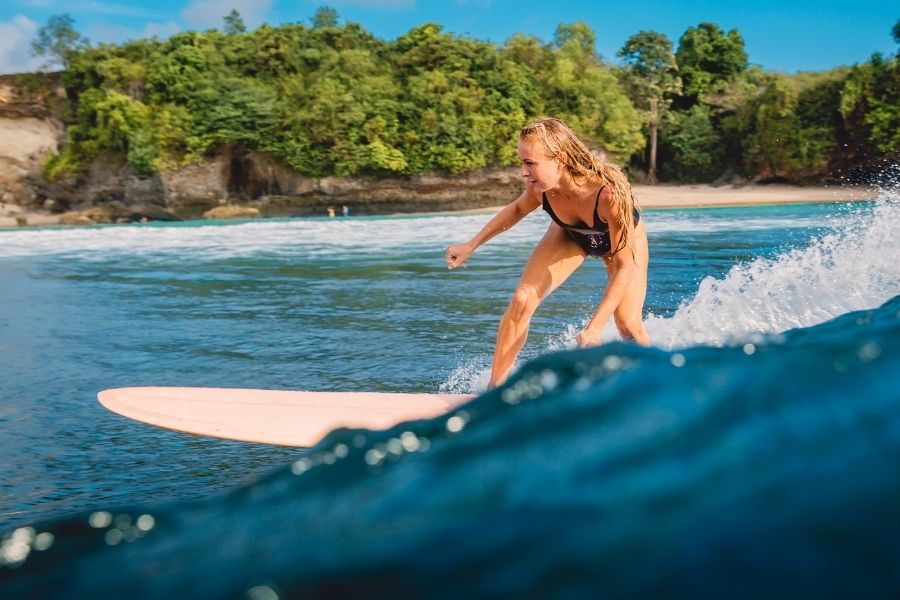
Each day, whether you conquer a giant wave or wipe out spectacularly, it’s all part of the story. A surf trip is more than just a getaway—it’s an adventure that challenges you, grounds you, and lifts you, all at once.
As the sun sets on your last day and you pack up your sandy gear, remember this: the ocean will always be there, ready for the next trip. So, next time you feel the call of the sea, you know just how to answer it.


